| An Army at Dawn
Scenario Preview, Part One
By Mike Bennighof, Ph.D.
June 2024
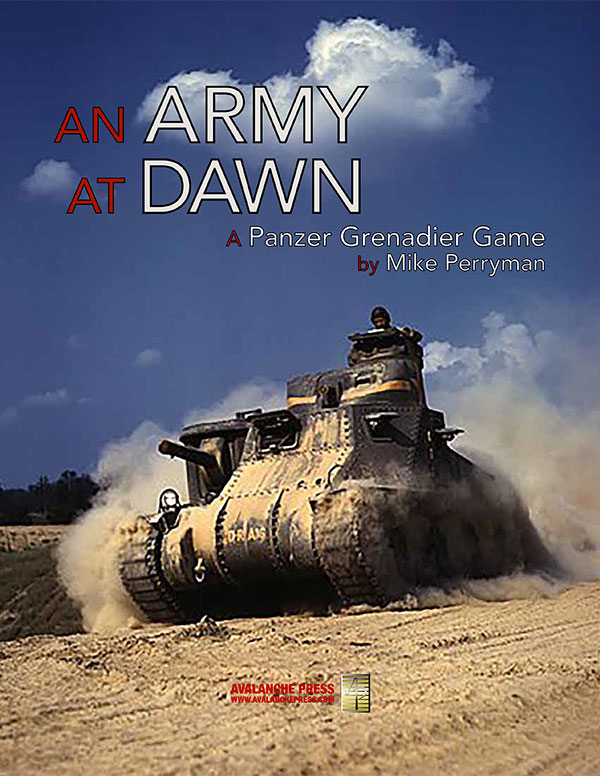 When we decided to switch Panzer Grenadier: An Army at Dawn from boxed to Playbook format, that gave us the opportunity to give the scenarios a thorough revision. And that’s what designer Mike Perryman has done: several scenarios have been dropped and preplaced with brand-new ones, and all those remaining have been thoroughly revised. When we decided to switch Panzer Grenadier: An Army at Dawn from boxed to Playbook format, that gave us the opportunity to give the scenarios a thorough revision. And that’s what designer Mike Perryman has done: several scenarios have been dropped and preplaced with brand-new ones, and all those remaining have been thoroughly revised.
Most of the game now has a very tight focus on the actions of the U.S. 1st Armored Division in Tunisia during the first months of 1943. “Most” is not the same as “all,” however, and the first two, rather brief chapters deal with the preliminary actions of the Americans against the French rulers of North Africa (or more accurately, the enforcers of said rule) and a couple of battle of those same. Let’s have a look at them:
Chapter One
Fighting the French
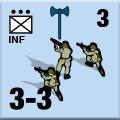 As part of their armistice terms with the Germans, the French authorities in North Africa undertook to defend their colonies against outside aggression, meaning an Allied invasion. Most Allied analysts did not believe that the French would actually fight, and Operation Torch went forward in November 1942 with the expectation of a friendly occupation rather than an armed invasion. As part of their armistice terms with the Germans, the French authorities in North Africa undertook to defend their colonies against outside aggression, meaning an Allied invasion. Most Allied analysts did not believe that the French would actually fight, and Operation Torch went forward in November 1942 with the expectation of a friendly occupation rather than an armed invasion.
That turned out to be a textbook case of magical thinking. The French most certainly resisted, both the small naval force assigned to North Africa and the garrison. The American 1st Infantry Division would receive its introduction to combat not against Nazi Germany, but instead fighting the men who should have been their allies.
Scenario One
Fold or Fight?
8 November 1942
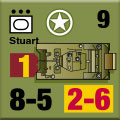 Major General Lloyd Fredendall’s Center Task Force landed on either side of Oran, Algeria. From three beaches they planned to converge on the city and capture the port. They remained unsure of whether the French would resist their advance or not, since the task force included no British troops. The French held a significant grudge against the British after they sank a number of French ships and killed 1,247 French sailors at Mers el-Kebir in 1940. Nevertheless, the American 18th Regimental Combat Team advanced from Z Beach toward St. Cloud. In 1942, the farm town of St. Cloud boasted a population of 3,500 housed in sturdy stone buildings that lay astride the main road east of Oran. Any Allied force advancing from the east would have to pass through there. Knowing that, the French created plenty of fire lanes and reinforced the defenders. Major General Lloyd Fredendall’s Center Task Force landed on either side of Oran, Algeria. From three beaches they planned to converge on the city and capture the port. They remained unsure of whether the French would resist their advance or not, since the task force included no British troops. The French held a significant grudge against the British after they sank a number of French ships and killed 1,247 French sailors at Mers el-Kebir in 1940. Nevertheless, the American 18th Regimental Combat Team advanced from Z Beach toward St. Cloud. In 1942, the farm town of St. Cloud boasted a population of 3,500 housed in sturdy stone buildings that lay astride the main road east of Oran. Any Allied force advancing from the east would have to pass through there. Knowing that, the French created plenty of fire lanes and reinforced the defenders.
Conclusion
This first real test of arms for the Americans revealed their lack of experience. The hidden French ambushed Company C and roughly handled them as they approached the town, quickly driving them off. A bit later they showed some grit and returned with the rest of their battalion. Again, the French sent the Americans packing. Apparently, these Frenchmen did not agree with the Allied preinvasion scuttlebutt that the French would welcome the Americans as liberators rather than invaders.
Notes
The game begins with a French defense against an American advance, and no one really wants to be here. The Americans have firepower on their side, but they are really, really green.
Scenario Two
Sans Peur et Sans Sommeil
8 November 1942
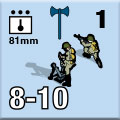 Earlier in the morning the 18th Infantry Regiment’s 1st Battalion had received rough treatment at the hands of the French in St. Cloud. This was not division commander Terry de la Mesa Allen’s first rodeo — he had commanded the Cavalry School before the war — and he quickly organized a stronger effort against the town. While 1st Battalion regrouped and retraced their steps eastward, the 2nd Battalion began working their way to the south to divide the defender’s attention. They attacked at about 1530 in the afternoon. Earlier in the morning the 18th Infantry Regiment’s 1st Battalion had received rough treatment at the hands of the French in St. Cloud. This was not division commander Terry de la Mesa Allen’s first rodeo — he had commanded the Cavalry School before the war — and he quickly organized a stronger effort against the town. While 1st Battalion regrouped and retraced their steps eastward, the 2nd Battalion began working their way to the south to divide the defender’s attention. They attacked at about 1530 in the afternoon.
Conclusion
Allen formulated a good plan but his soldiers were too green to make it work. They pressed the attack to the edge of town, but as more officers fell the men became confused and fell back against orders. Once the French artillery zeroed in, any chance of success evaporated. The reversals on this day foretold that many Americans would shed blood before they became a competent fighting force.
Notes
Two separate American forces are driving against the French defense; their morale hasn’t gotten any better and they have no armor support. They do have plenty of artillery firepower (this is the U.S. Army we’re talking about here). We had a scenario in the old edition based on this action, but it’s been pretty much replaced.
Chapter Two
The Fighting French
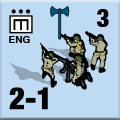 French resistance ended abruptly on 10 November, when Admiral François Darlan, commander-in-chief of all French armed forces, made a deal with Allied commanders naming him “High Commissioner” of French North Africa in exchange for ordering his troops to stop fighting and join the Allied forces instead. Amid the confusion, one French battalion actually skirmished with Italian troops on 9 November, while others still fought the Americans, but by the 19th everyone knew where they stood and French troops were in action against the Germans and Italians along the western border of Tunisia. French resistance ended abruptly on 10 November, when Admiral François Darlan, commander-in-chief of all French armed forces, made a deal with Allied commanders naming him “High Commissioner” of French North Africa in exchange for ordering his troops to stop fighting and join the Allied forces instead. Amid the confusion, one French battalion actually skirmished with Italian troops on 9 November, while others still fought the Americans, but by the 19th everyone knew where they stood and French troops were in action against the Germans and Italians along the western border of Tunisia.
Scenario Three
Rebaa Oulad Yahia
16 December 1942
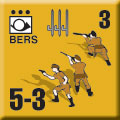 The Dorsal Mountains – the eastern extension of the Atlas Mountains of northern Algeria – dominate northern Tunisia as well. The Germans controlled the high ground where the Dorsals’ Eastern and Western branches met, giving them an excellent observation point overlooking any Allied drive on Tunis. To prepare for the main effort scheduled to begin on Christmas Day, the Allies needed to clear and seize those heights. The 7th Moroccan Tirailleur Regiment drew the honor of occupying Rebaa Oulad Yahia to provide the base of operations to tackle the heights themselves. The Dorsal Mountains – the eastern extension of the Atlas Mountains of northern Algeria – dominate northern Tunisia as well. The Germans controlled the high ground where the Dorsals’ Eastern and Western branches met, giving them an excellent observation point overlooking any Allied drive on Tunis. To prepare for the main effort scheduled to begin on Christmas Day, the Allies needed to clear and seize those heights. The 7th Moroccan Tirailleur Regiment drew the honor of occupying Rebaa Oulad Yahia to provide the base of operations to tackle the heights themselves.
Conclusion
The Moroccans secured Rebaa Oulad Yahia as a base for further operations, but the push deeper into the hills bogged down due to tough Italian resistance. On the 22nd, Gen. Louis Koeltz, commanding the French XIX Corps called off the offensive without the heights having been secured. A stronger attempt launched anyway a few days later also failed.
Notes
This is an unusual matchup, Moroccans (this scenario really cries out for use of the red Moroccans from Swallows of Death) against Italians. Neither has great morale, or great artillery support; they’re just going to have to slug it out in the rough terrain.
Scenario Four
Faid Pass
30 January 1943
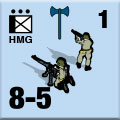 On the 24th, II Corps commander Lloyd Fredendall had directed part of 1st Armored Division to stage a raid on Sened Station, a “successful” but otherwise pointless exercise that merely revealed to the Germans the vulnerabilities of their position in the south. If the Americans exploited this weakness, the Axis forces fighting in northern Tunisia would be cut off from the remnants of the Africa Corps holding the Mareth Line in southern Tunisia. The Germans moved promptly to prevent such a possibility. On the 24th, II Corps commander Lloyd Fredendall had directed part of 1st Armored Division to stage a raid on Sened Station, a “successful” but otherwise pointless exercise that merely revealed to the Germans the vulnerabilities of their position in the south. If the Americans exploited this weakness, the Axis forces fighting in northern Tunisia would be cut off from the remnants of the Africa Corps holding the Mareth Line in southern Tunisia. The Germans moved promptly to prevent such a possibility.
Conclusion
The Allies already planned to reinforce the French units holding the pass but proved lackadaisical in carrying out their intention. When the attack began at 0400 the French commander quickly went to the commander of Combat Command A and asked for support. Due to an archaic command system it was 0900 before Combat Command A received orders to do something. The unclear orders caused consternation and only a small recon element went forward, but they confirmed the German attack in regimental strength. As a new morning dawned a counterattack finally launched. Despite all the bureaucratic bumbling, the French still held the pass at day’s end.
Notes
A German infantry force with a smidgen of Italian tank support is on the attack against the French (actually, Algerians). The Germans have only a slight edge in numbers and morale, and a pretty high standard to meet for victory, so this is going to be a very tough assignment for them.
You can order An Army at Dawn right here.
Big Red Package
An Army at Dawn
Big Red One
Retail Price: $92.98
Package Price: $85
Gold Club Price: $68
You can order the Big Red Package right here.
Sign up for our newsletter right here. Your info will never be sold or transferred; we'll just use it to update you on new games and new offers.
Mike Bennighof is president of Avalanche Press and holds a doctorate in history from Emory University. A Fulbright Scholar and NASA Journalist in Space finalist, he has published a great many books, games and articles on historical subjects; people are saying that some of them are actually good.
He lives in Birmingham, Alabama with his wife, three children, and new puppy. He misses his lizard-hunting Iron Dog, Leopold.
Want to keep Daily Content free of third-party ads? You can send us some love (and cash) through this link right here.
|
